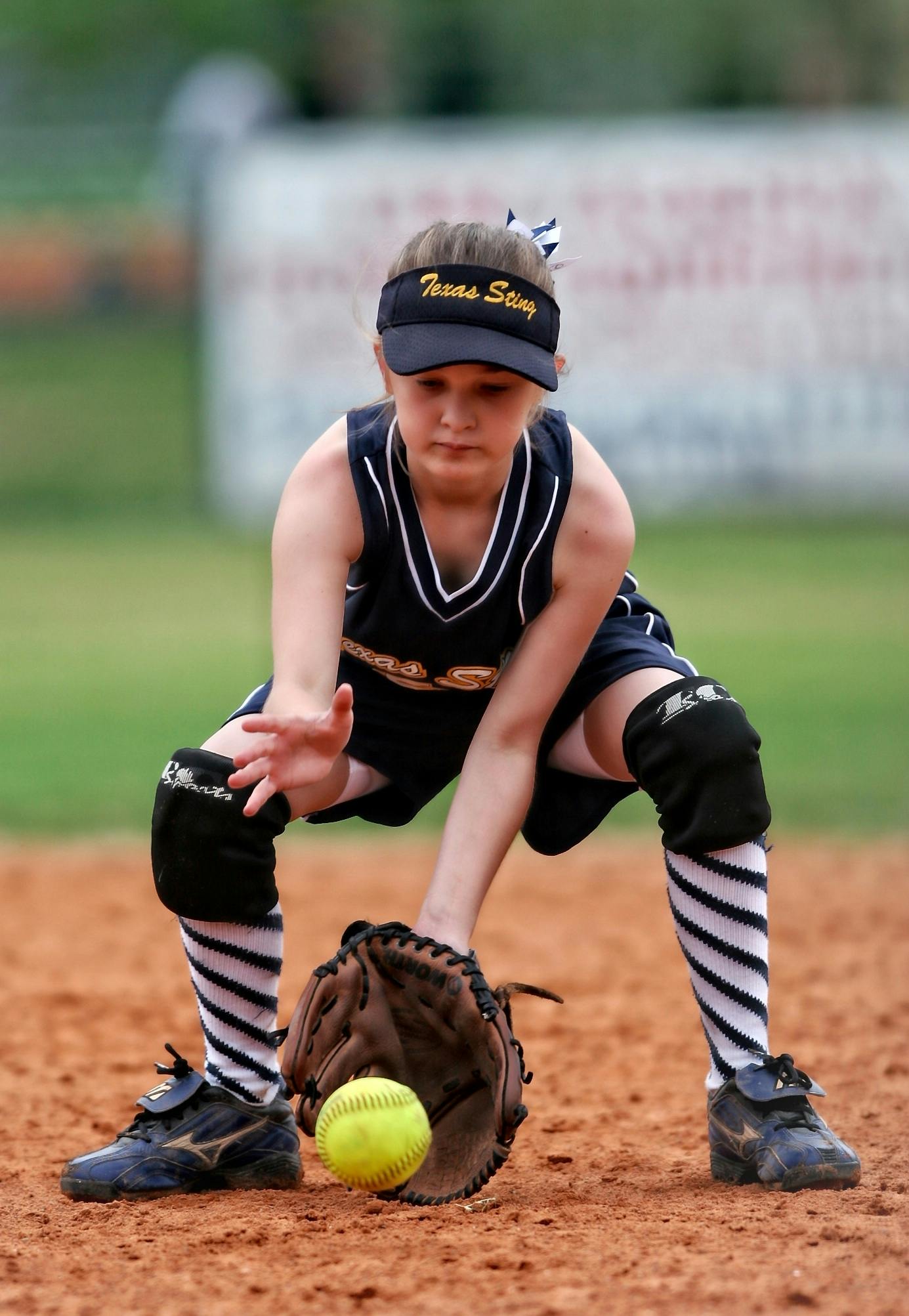Framing is the art of a catcher receiving a pitch in a way that makes it more likely for an umpire to call it a strike. This crucial skill can significantly impact the game by helping pitchers get more favorable strike calls on borderline pitches. Instead of letting the ball’s momentum move the glove around, skilled catchers use subtle techniques to present pitches in the most favorable way to the umpire.
Good framing can help turn borderline balls into strikes or prevent strikes from being called balls due to poor presentation. The effects of a single pitch can be huge, making this skill valuable for helping pitchers and influencing the outcome of at-bats. The goal isn’t to deceive the umpire, but rather to present each pitch clearly and in the best possible light through smooth, confident receiving technique.
This guide provides proven drills and techniques to help softball catchers master the fundamentals of effective pitch framing.
Understanding Proper Framing Fundamentals
Before diving into specific drills, catchers must understand the basic principles of effective framing. Framing refers to what the catcher does with her glove when she catches the pitch, using controlled movements to present borderline pitches favorably to the umpire.
The Art of Subtle Presentation: Effective framing is about influencing the umpire’s visual perception of borderline pitches through skillful glove work. The catcher’s goal is to make a pitch that might be called a ball appear more like a strike through subtle manipulation of how the pitch is received and presented.
- Why subtlety matters: The key to successful framing lies in making these adjustments appear completely natural. Obvious or dramatic movements immediately signal to the umpire that you’re trying to manipulate the call, which typically backfires and can hurt your credibility for future at-bats.
- The accepted art form: Like many aspects of sports strategy, framing operates within understood boundaries of gamesmanship. Similar to how basketball players learn to draw fouls or how pitchers use deceptive timing, framing is an accepted skill that’s part of the catcher’s toolkit when executed properly.
- Building umpire trust: Successful framers understand that their reputation with umpires builds over time. Catchers who consistently receive pitches smoothly and present borderline calls subtly earn credibility that pays dividends throughout games and seasons. Those who attempt obvious manipulation often find umpires become more skeptical of their receiving technique.
Core framing techniques:
- Stay as motionless as possible behind the plate and twist the ball towards the strike zone as you receive it
- “Get around the ball” by catching the outside of the baseball and closing the glove toward the strike zone
- For low pitches, move your wrist forward to drop the top of your glove down as you catch the ball
- Use smooth, controlled movements rather than jerky or obvious adjustments
Key timing principles: Never frame a pitch for more than a moment or two, as this becomes obvious to the umpire and can work against you. The framing motion should happen as you catch the ball, not after you’ve already secured it.
Essential Stationary Framing Drills
These foundational drills help catchers develop proper framing mechanics without the complexity of live pitching situations.
Mirror framing drill: Set up in front of a mirror in your catching stance. Have a coach or partner toss balls to different locations around the strike zone. Practice receiving each pitch while watching your technique in the mirror. Focus on smooth glove movement and maintaining proper body position throughout the catch.
Four-corner framing drill: Place targets at the four corners of the strike zone. Have someone toss balls just outside each corner, then practice framing them back toward the strike zone. Start with slow tosses and gradually increase speed as your technique improves.
Wrist flexibility drill: Practice the specific wrist movements needed for effective framing without using a ball. Work on the forward wrist motion for low pitches and the subtle turning motion for outside pitches. This drill helps build the muscle memory needed for quick, natural framing movements.
Glove path drill: Using a tee or stationary ball, practice the proper glove path for different pitch locations. Focus on catching the outside edge of the ball and bringing it toward the strike zone through controlled wrist and hand movement.
Practice these drills for 10-15 minutes at the start of each catching session to reinforce proper mechanics before moving to more complex scenarios.
Live Pitching Framing Practice
Once catchers master basic framing mechanics, they need to apply these skills in realistic game situations with live pitching.
Borderline pitch drill: Have pitchers throw to specific locations just inside and outside the strike zone. Practice framing only the borderline pitches while receiving obvious strikes and balls normally. This teaches pitch selection judgment along with framing technique.
Situational framing drill: Practice framing in different count situations. Work on framing 2-0 and 3-1 counts where borderline strikes are crucial, versus 0-2 counts where framing is less important. This develops game awareness and strategic thinking about when to frame.
Progressive speed drill: Start with slow pitches and gradually increase velocity as framing technique improves. This helps catchers maintain proper framing mechanics even when dealing with faster pitches that require quicker reactions.
Mixed location drill: Have pitchers throw to random locations around the strike zone without telling the catcher where the pitch is going. This develops the ability to quickly assess each pitch and decide whether framing is appropriate. When possible, practice with an actual umpire who can provide real-time feedback on framing effectiveness.
Advanced Framing Techniques and Game Application
As catchers become comfortable with basic framing, they can work on more sophisticated techniques and game-situation applications.
High-leverage framing: Focus on framing effectiveness in crucial situations like full counts, two-strike counts, and first-pitch strikes. These situations often determine at-bat outcomes and game momentum, making subtle framing adjustments particularly valuable.
Pitcher-specific strategies: Different pitchers require different framing approaches based on their stuff and command. Develop specific framing strategies for each pitcher on your team, understanding their typical miss locations and pitch characteristics. Work with pitchers to understand their command patterns so you can anticipate framing opportunities.
Umpire adjustment techniques: Learn to read different umpires’ strike zones and adjust framing accordingly. Some umpires call a wider zone, others are more strict. Adapt your framing intensity and frequency based on each umpire’s tendencies throughout the game.
Recovery and sequence framing: Learn to frame pitches that don’t come in exactly where expected, requiring quick adjustments and advanced hand-eye coordination. Practice framing in the context of pitch sequences rather than individual pitches, as sometimes setting up one pitch with subtle framing helps establish credibility for framing later pitches in the at-bat.
Practice these advanced techniques during scrimmages and game-like situations where the pressure and timing match actual competition scenarios.
Conclusion
Mastering pitch framing requires dedicated practice of proper mechanics, timing, and game awareness. Start with stationary drills to build fundamental technique, then progress to live pitching situations that simulate game conditions. Remember that effective framing is subtle and strategic – focus on borderline pitches where small adjustments can influence calls.
Consistent practice of these drills will help catchers develop the skills needed to steal strikes and support their pitchers effectively. The key is patience and repetition, allowing proper framing mechanics to become automatic responses during game situations.
Athletes Untapped
Developing advanced catching skills like framing requires personalized instruction from experienced coaches. Athletes Untapped connects catchers with specialized instructors who understand the nuances of pitch framing and can provide targeted feedback to improve your game-calling abilities. Find a coach in your area now.




